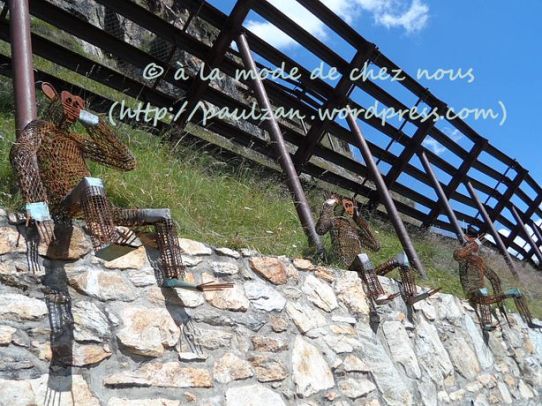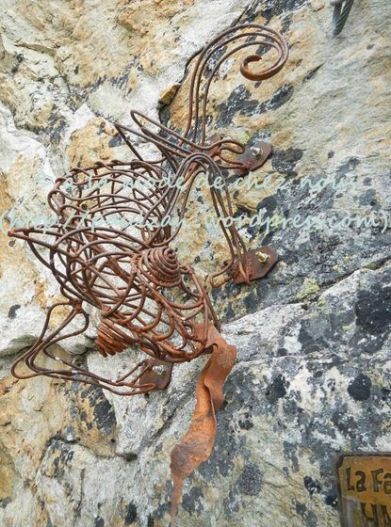[…] Hecataeus and certain others say that in the regions beyond the land of the Celts there lies in the ocean an island no smaller than Sicily. […] And there is also on the island both a magnificent sacred precinct of Apollo and a notable temple which is adorned with many votive offerings and is spherical in shape. […] The account is also given that the god visits the island every nineteen years, the period in which the return of the stars to the same place in the heavens is accomplished […]
At the time of this appearance of the god he both plays on the cithara and dances continuously the night through from the vernal equinox until the rising of the Pleiades, expressing in this manner his delight in his successes. And the kings of this city and the supervisors of the sacred precinct are called Boreadae, since they are descendants of Boreas, and the succession to these positions is always kept in their family.
Diodorus Siculus, Book II, 47-48 (trans. C. H. Oldfather, Loeb Classical Library edition, 1935)
Here I am late mid-summer’s night (i.e. 21st June), in front of my desk computer, when today I should have gone to the canton of Grisons or, better, to England, Scotland, Ireland, France, Germany or even Italy. Why? Because the summer solstice was a special time of the year for the inhabitants of this country (as well as for those of the countries just listed), not thousands of years but maybe as few as two or three centuries ago – see the paragraph about the church of Elm (canton of Grisons) towards the end of this entry.
According to my Shorter Oxford English dictionary, the noun solstice is derived from two Latin words: the noun sol (the sun) and the verb sistere (to stand still). However, the solstice (both the astronomical concept and the accompanying celebrations) predates the Roman civilisation by at least two millennia and it was not limited to Europe (e.g. the Sumerians, the Egyptians, etc.).

Dolmen, Bugibba Temple, Malta, 3000 to 2000 BC, 3rd March 2011
Yet I am not really interested in experiencing the summer solstice anywhere else than at a prehistoric site here in Europe (so not even at Göbekli Tepe) because the beauty of megalithic* structures has fascinated me ever since I saw Stonehenge for the first time many, many years ago – even though I did not get to visit the site on that particular occasion. By the way, this infatuation with European megaliths also rules out the dozens and dozens of Christian churches which were built on pagan places of worship – and in some cases on foundations dating back to prehistoric times – and which ended up incorporating allusions to or even direct solstice ‘practices’ into their own architecture. This also excludes places like Lascaux, a world heritage site famous for its prehistoric paintings, because even though its ‘altar’ is claimed to be illuminated on the summer solstice with the golden rays of the sunset, Lascaux is a cave, not a megalithic structure (anyhow the site is no longer open to the public).
When last year I came across a poster advertising the musical celebrations which are traditionally held in Lausanne to celebrate the solstice (Fête de la Musique, or Music Day in English) together with another poster announcing some forthcoming classical music concert, it struck me that there must have been much more behind the launch of the event than the intention to simply stage a musical celebration of mid-summer’s night. Confirmation of this I found in the history of Fête de la Musique, which is why I decided that if I were ever to do anything again in connection with the 21st of June, it would have to take place at a prehistoric site, in connection with the ancient custom of celebrating the summer equinox.

Standing stones at Lutry (canton of Vaud)
So on the eve of the summer solstice last year, I found myself wondering whether to get up very early to reach the prehistoric site nearest to home, an alignment of menhirs at Lutry, the village which marks the beginning of the world heritage region of Lavaux, just before the first rays of the sun would chase the shadows of the night away from this set of upright prehistoric stones. However, I recalled the words of a lady I had met on a Celtic Festival held at La Riponne in Lausanne some fourteen months earlier, who having told me that she had lived just opposite the alignment of menhirs had answered my question as to whether she had been able to feel any telluric effects from the stones by a resounding ‘no way given that they had set the stones back up in any old fashion’…
Many authors have pointed out that the stone-assemblers who left us the thousands of menhirs and the scores and scores of dolmens that are to be admired across several European countries (and on other continents too) did not erect them at random, i.e. without due consideration to the physical properties of the terrain – this is why some authors even claim that such structures can heal both people and animals (e.g. Dr René Bouchet, La Guérison par les courants telluriques, Éditions Trajectoire, 2009)!
The problem in Switzerland is that there are not many prehistoric megaliths left which have not been tinkered with in one way or the other, so that any telluric properties that the stones might have had in the past could well have been wrecked forever. For instance, the stone alignments at Clendy and Corcelles-près-Concise, both located towards the north-eastern extremity of the canton of Vaud (more precisely, on the south-western tip of Lake Neuchâtel), are not in their original state, either having been pushed back up and even moved in 1986 for the former or having received a replacement menhir already in the 19th century for the latter.
 Standing stones at La Mutta (Grisons)
Standing stones at La Mutta (Grisons)
As I had not planned any trips well beforehand, I found myself facing the same conundrum yesterday night (20th June), being far too late, for example, to register for the summer solstice at Parc la Mutta, Falera, in the canton of Grisons (Graubünden in German), which is by far Switzerland’s largest stone circle. Located on the eastern end of Switzerland and in a mountainous region, the canton of Grisons is less easy to access than, say, the Grandson area, south west of Lake Neuchâtel.
This is why I believe that it would be almost better, should I decide to celebrate the summer solstice next year, to go to the British Isles (say Newgrange in Ireland or England, Scotland), Italy (sacred well at Paulilatino, Sardinia), Germany (spending the night in the the vaulted rock at Externsteine) or France (too many sites to list here)…
Otherwise I could settle for a non-prehistoric site on one of the other equinox dates (vernal or autumnal):
There are two days in the spring and the summer in Elm when sunrise is especially eagerly anticipated. Or to be precise, the spectacle takes place shortly before sunrise. For it is then that the sun shines through the Martin’s Hole directly onto the Church of Elm.
https://www.myswitzerland.com/en-ch/martinsloch-the-sunny-window.html
* Megalith: a large stone, especially one forming (part of) a prehistoric monument (SOED, electronic version)
Some links
https://www.telegraph.co.uk/travel/destinations/europe/united-kingdom/articles/summer-solstice-events-and-pagan-sites-around-britain/
http://www.megalithic.co.uk/topics.php?countries=1
 La Pierre aux Fées, Reignier, France
La Pierre aux Fées, Reignier, France
 I chose to display only the four worst hit cantons; source: https://dashcoch.herokuapp.com/
I chose to display only the four worst hit cantons; source: https://dashcoch.herokuapp.com/ Source: https://dashcoch.herokuapp.com/
Source: https://dashcoch.herokuapp.com/






































 Highly ironic autograph because this book indeed allowed me to ‘
Highly ironic autograph because this book indeed allowed me to ‘
 ‘
‘

